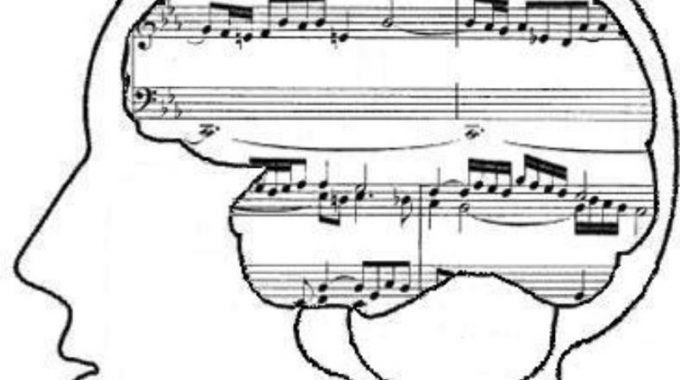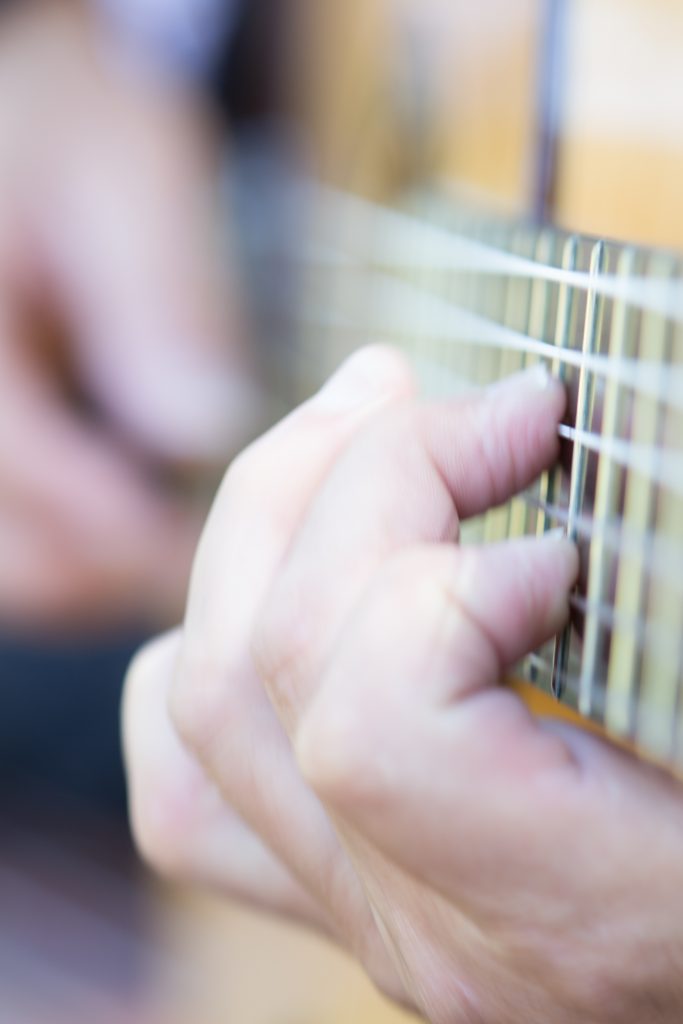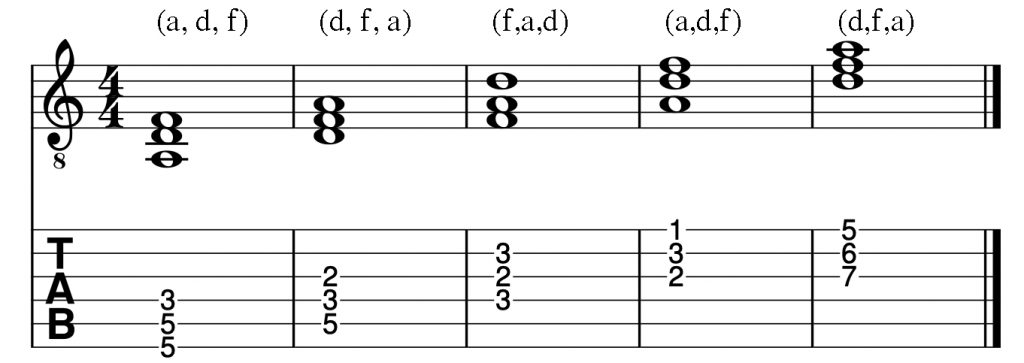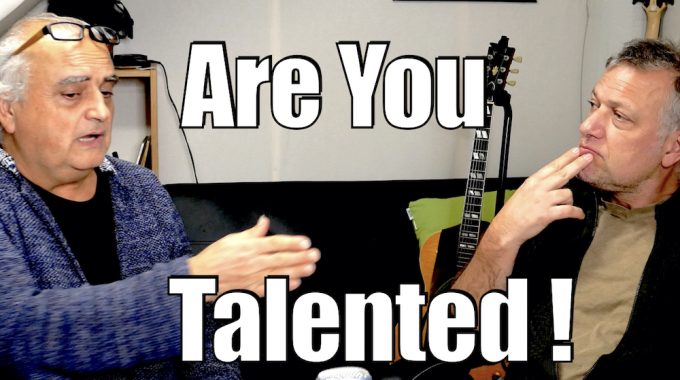Whenever we play on the guitar any song, either as accompaniment or lead, in any…

Why Can’t I Memorize Music
Beating Music Learning Anxiety: Tips for Connection and Success
Here are some valuable tips for individuals who struggle with memorizing music and experience anxiety attacks while striving to achieve their musical goals. This anxiety often stems from overthinking potential outcomes, which is why the primary focus of my teaching is always to connect with the music on an emotional and auditory level, allowing thoughts to take a back seat.
Regrettably, most major Music Schools and Conservatories do not tackle this issue, largely due to their lack of understanding on how to address it. This is because only a handful of musicians have managed to overcome anxiety while maintaining their professionalism in the later stages of their careers, all the while staying relatively healthy.
This facet of learning impacts both adults and children and is a matter of great seriousness. In fact, it can be considered one of the most critical objectives in the realm of music education, as it often becomes the decisive factor between fostering a deep companionship with music or merely observing it from a distance.
Playing music is something inherent to all of us, as it naturally springs from the human mind’s expressive capabilities. As a result, a guitar teacher should possess the essential tools to guide students in learning comfortably and joyfully.
How to Memorize Music
Rhythm is the key to making music memorable. The ability to recall a piece of music hinges on your capability to sing its melody in sync with the beat.
The joy of singing along with the beat comes when you’ve learned the song in its original context. Thus, it’s best to memorize a song’s melody directly from the original recording rather than relying on sheet music.
Harmony, in this context, follows naturally. There’s no need to fret over it. Once you have the melody down, fitting the guitar chords becomes much simpler.
Therefore, the initial focus is on grasping the rhythm, followed by understanding when sounds come in and the technique used to produce those sounds.
It’s important to note that I’m not delving into muscle memory or visual learning here, as those often involve repetition and can lead to frustration.
These tips are applicable to all types of guitars—classical, acoustic, or electric—and any music style, be it jazz, flamenco, or blues.

Effective Techniques to Memorize Music with Confidence
When you need to memorize a song next time, avoid immediately turning to your guitar and attempting to recreate the sound based solely on where your fingers have been placed in the past. Instead, start by tapping into the beat and allowing the melody to naturally come to your mind. And believe me, it will – it always does, once you grant yourself permission!
Put your trust in your musical unconscious mind, as it holds more knowledge than you might consciously realize. When you engage with music, let your thoughts take a back seat, and immerse yourself in the world of sound and rhythm. Overthinking can lead to confusion, frustration, and anxiety, so try not to dwell on it too much.
In summary, if you’re able to play and have a great time, then go ahead and enjoy. However, if you’re encountering challenges in your learning process, it’s essential to reorganize your approach to effectively memorize music.
Embrace the Music: Let's Memorize Closed Triads of the C Scale Together
Here’s an illustrative example focused on memorizing the closed triads of the C scale in one specific position, comprising approximately 28 distinct shapes.
Can you simply memorize these shapes?
Absolutely not!
Instead, the crucial aspect is understanding how to memorize and recognize these shapes based on sound, tempo, process, and a bit of thinking.
Let’s delve into the process with an example. Assuming you’re not entirely familiar with the note names on the guitar, follow these steps over a span of 7 days. By the end, you’ll have adeptly memorized the 28 shapes, deliberately proceeding at a slow pace.
Steps to Memorize Music:
- Select one of the 7 triads and jot down its notes on paper, for instance, Dm = d, f, and a.
- Start from the lowest string and identify your starting note. Keep in mind that even if your starting note is on the sixth string, achieving a closed inversion might not be feasible.
- Position the appropriate finger on the note. Remember that the first finger corresponds to the first fret, the second to the second fret, the 3rd to the 3rd fret, and the 4th to the 4th fret of the guitar.
- Pose the question: What’s the following note of the closed triad? Analyze the three notes, make a selection, and locate it on the next string. If you’re uncertain about the guitar’s note arrangement, ask yourself:
- What’s the name of the subsequent open string?
- Following the open string, which note follows in the C scale?
- How many frets separate these two notes? Once you have the answers, place your finger on the targeted note. Remember to commit the process to memory, not merely the note’s location. And don’t forget to keep your fingers on the fretboard to avoid starting over.
- Now, let’s locate one more note. Why? Repeat the steps for the third note of the triad. Keep in mind that the subsequent note will invariably be on the next string.
- Play each of the three notes individually and vocalize their sounds.
- Lift your fingers and replicate the process for the next inversion, beginning from the next string. Questions to ask yourself:
- Which string am I initiating the chord from?
- What’s the name of the starting note on this string?
- Where is this note positioned? Locate it based on your existing knowledge—the open string—and then move up the scale, one note at a time. Inquire about the subsequent note and the frets separating both. Now, position the proper finger on the correct fret.
- Recreate the process until you’ve completed the inversion. Ensure you don’t overlook any step.
Should you repeat this chord progression multiple times on all strings?
No, it’s better to go through the same procedure with all the other chords in the scale. Afterward, grant yourself a break for the day.

Embarking on a Harmonic Quest: Exploring the Joys of Music Memorization
Here’s a deliberate process where you’re learning to follow a series of thoughts and actions that lead to a specific goal: memorizing music.
Repeat this gradual process with all the triads once a day for a week, and eventually, you’ll have created a clear pathway that takes you directly to your desired outcome: memorizing music effortlessly.
Picture the mind like a dense thicket of moving trees and shrubs, akin to our daily emotions as we experience life’s changes.
This sequence of actions will help you establish the route that, after a few repetitions, trains your mind on how to reach the intended result of memorizing music.
Learning doesn’t solely revolve around focusing on the end goal; it’s about understanding the steps to achieve it.
As time goes by, you’ll have carved out a pathway that will light up as swiftly as a beam of light, guiding you toward the ability to memorize music with ease.
In my dedicated online guitar course for songwriters, I delve deep into exploring all closed triad inversions, providing you with the tools to confidently memorize music
How many times do I have to repeat this process?
Practice in this manner for four consecutive days, allocating time for it once a day.
Upon completing the fourth day, arrange your fingers systematically, synchronized with a beat, and vocally articulate your actions. Visualize the movements within your mind without physical imitation. Gradually play the chord, sounding each note individually as you vocalize the corresponding notes.
Subsequently, revisit all the triads, deliberately executing each at the metronome’s slowest tempo.
Through these exercises, you’re cultivating the ability to discern and cogitate harmoniously in alignment with a rhythmic foundation. This marks the conclusive phase of the music memorization process.
You will Need a Guitar Teacher
Going about this on your own can be pretty tough. Think about it: when we’re learning something new, we’re a bit like kids in need of direction. Having a guitar teacher to guide us is like getting a bigger picture view, stopping us from taking shortcuts that just end up making us frustrated.
What do you think?
From what I’ve seen, if you’re not on board with a detailed learning process like this, you probably haven’t struggled with memorizing music or dealt with serious anxiety about it
Music Schools and Conservatories do not Address the Problem
I studied my career at Berklee College of Music, Conservatories and music schools dedicated to adult learning. Never in any of these schools where they able to take care of teaching students how to memorize music especially those who had great difficulty in learning as myself.
I hope these tips will help you as they helped me everyday in my music for over 50 years.
Summary: Insights for Easing Learning Anxiety
Struggling with memorizing music and facing anxiety? Learn tips to connect emotionally with music, letting thoughts fade to the background. Major music schools often neglect this, lacking insight on addressing it. This crucial skill affects all ages, determining a deep connection or distant observation of music.
Music’s natural to humans, making guitar teachers vital for comfortable, joyful learning. Memorize music by focusing on rhythm and melody before harmony. Repeat this process, then link it to a beat. Soon, you’ll master harmonizing with rhythm, crucial for memorizing music. Guitar teachers guide, avoiding shortcuts that lead to frustration.
Online guitar course helps explore closed triad inversions. Music’s learned step-by-step; a guitar teacher supports your musical journey.


